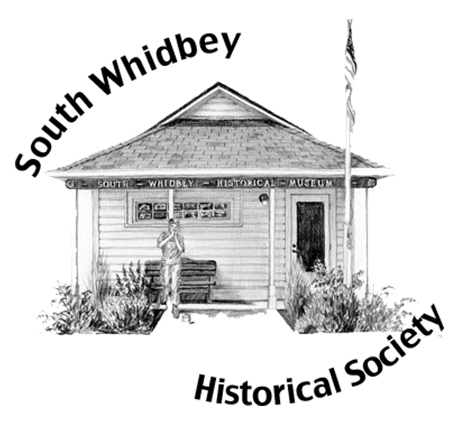Note: Walter Seiforth has lived in the same house on Millman Road for over 70 years. He is one of South Whidbey’s most colorful pioneers. His story follows as told in an interview with Dena Bullard, a journalism student at Langley Middle School; her teacher is Sue Haworth.]
Paul and Minnie Seiforth were both bom in Germany. Paul was bom in Chemnitz and sailed to America while in his early 20’s. The ocean trip took 28 days. Minnie was bom in Dresden and came to America when she was three. Paul and Minnie met and married in North Dakota, and had a son, Walter, bom in 1891, and three daughters. Daughter Minnie married a Gabelein.
In 1914, Walter’s family moved to South Whidbey and he has lived in the same house on Millman Road for most of those years. His nearest neighbors were the Dassels, Grimms, Sinclairs, Sam Haner, the Johnsons, and the Newmans.
Walter and a few neighbors built the house where he lives. They would cut down trees three and four feet in diameter with two man-made saws and spring-boards—which were flat pieces of iron and a two-by-six that they put in a notch in a tree and would jump on to make the tree fall. Cutting the trees was a back-breaking job. Eight trees in one day was considered a good day’s work. Once Mr. Johnson was paid $1,000 to cut trees down. After the trees were cut, the men would put them on skids and oxen would haul them to the beach. Then they would float the logs to a small saw mill that used to be at Bayview. One time Walter fell overboard at midnight. Bush Point and Holmes Harbor were all timbered at that time.
Walter raised cows, horses, chickens, and turkeys. “Like Noah’s Ark,” he said. “You never put chickens and turkeys together. They’ll kill each other.” He had a coop full of chickens and 55 cows. Most of the cows were for beef but he milked eight or ten of them and shipped the milk to Burlington. The grain raised was always good and so were the potatoes.
Everybody’s diet consisted mostly of what was grown so they all ate meat, potatoes, gravy, vegetables, clams, salmon, and rock cod especially during the Depression. “We never went hungry,” Walter said. Not only did he raise food, but he hunted, too. After autos were invented, he and some friends would drive around onto the Olympic Peninsula and hunt for elk and deer. When the Keystone Ferry wasn’t running, that took a long time.
Once, when one of Walter’s legs was healing from a break, he went into the bull pen to clean it, but the bull started to come after him. He threw one crutch at it but it kept charging, so he threw the other crutch and fell to the ground. The bull ran onto him and broke all his ribs. The neighbors heard his cries for help and came running with a dog which distracted the bull. Walter escaped further injury and he believes that if it hadn’t been for that dog, he wouldn’t be alive today.
Another time, a dentist was supposed to take out some of Walter’s teeth, but he pulled the teeth out of the whole jaw. The nurse was so shocked that she almost fainted. The dentist had given him a little pain killer and the operation didn’t hurt much, but Walter never paid the dentist nor answered any of the letters that were sent.
“I’ve lived on this island for 70 years, he said, “and it was a lot of work—but I wouldn’t want to live any other place.”
[Note: Walter had lived on South Whidbey for two years before he had the courage to write and ask the girl in North Dakota with whom he was in love to come west and marry him. Apparently she said “yes,”
because in 1916, he built his own house from logs cut on the property. Walter and Laura were married and lived in their house for several years before Laura died. There were no children and Walter has lived alone for many years. He has written his own personal story, and it follows.]
